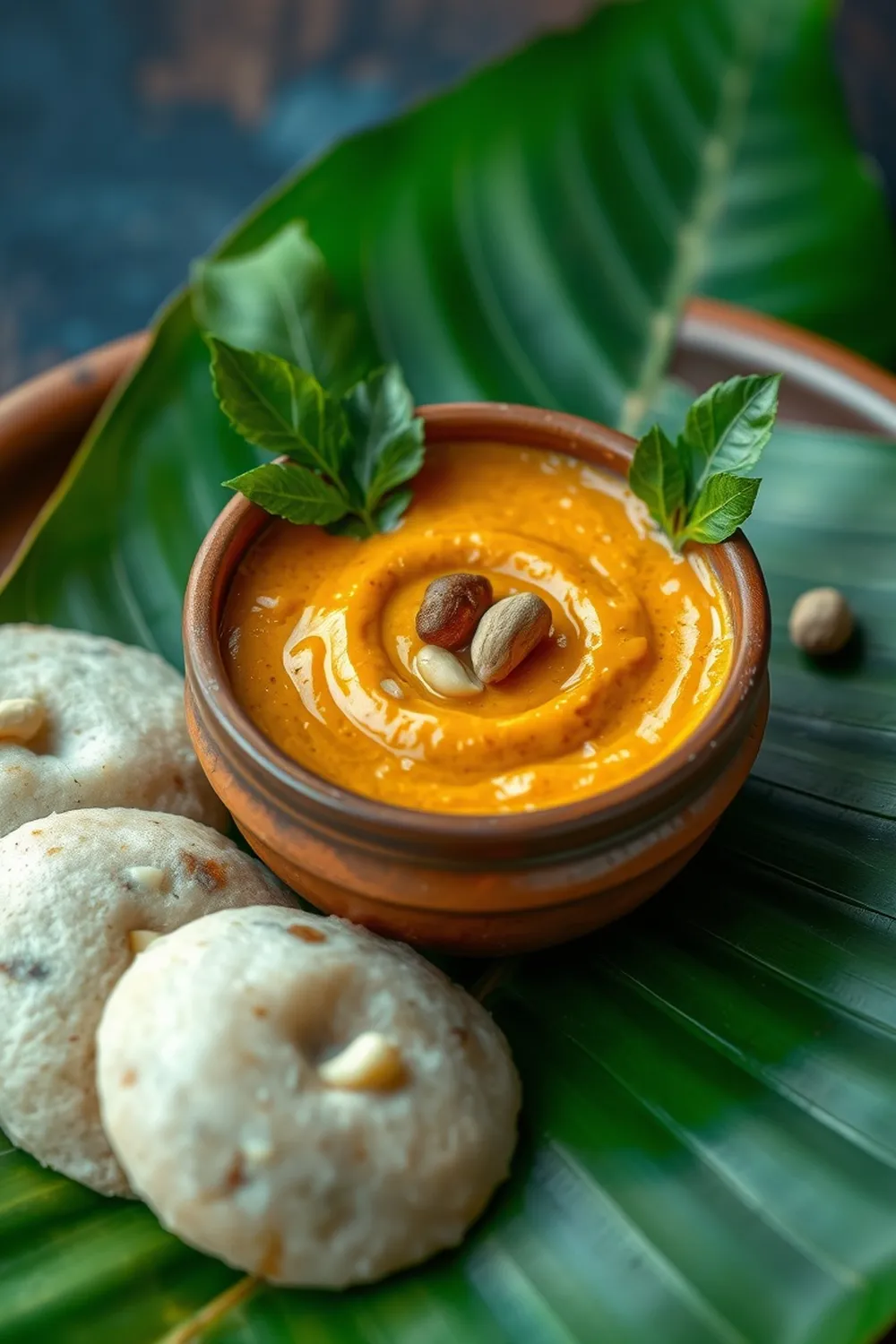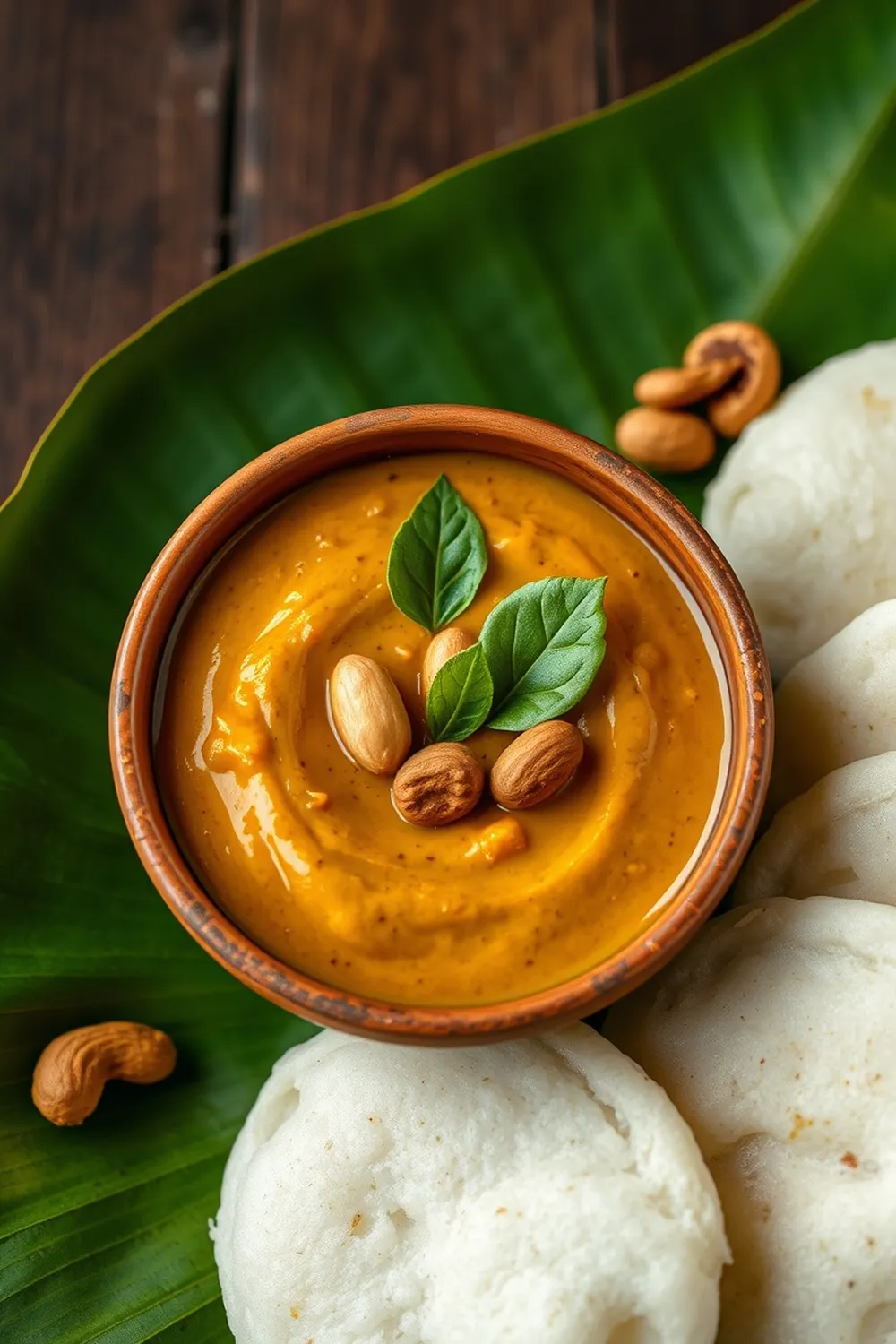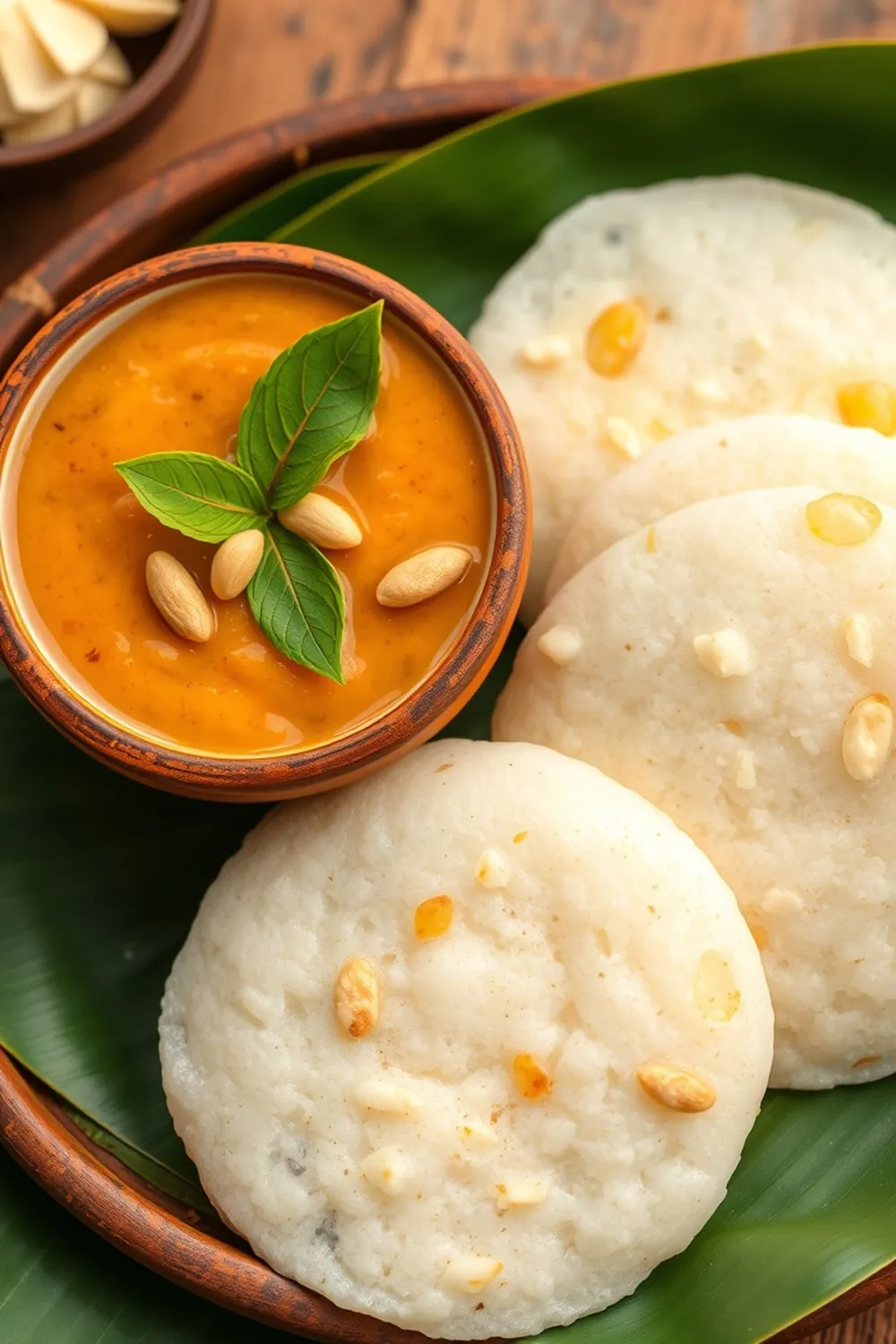- Heat oil in a pan. Sauté green chilies, garlic, and dal until golden.
- Add peanuts and curry leaves. Roast on medium heat until aromatic.
- Stir in cumin seeds, turn off the heat, and let ingredients cool.
- Grind the roasted mixture with salt, tamarind (if using), and water to a smooth paste.
- Optional: Temper with mustard seeds, red chilies, curry leaves, and garlic in hot oil. Pour over chutney.
- Serve fresh with idli, dosa, or snacks.
- Calories:220 kcal25%
- Energy:920 kJ22%
- Protein:7 g28%
- Carbohydrates:20 mg40%
- Sugar:2 mg8%
- Salt:300 g25%
- Fat:15 g20%
Last Updated on 4 months by Neha Deshmukh
Authentic South Indian Peanut Chutney Recipe – Easy Dal & Curry Leaf Dip
Hey everyone! If you’ve ever been to South India, you know no meal is complete without a vibrant, flavorful chutney. And honestly, this Peanut Chutney? It’s one of my absolute favorites. It’s so easy to whip up, and it adds a burst of deliciousness to everything from idli and dosa to simple snacks. I first made this when I was trying to recreate the flavors of my travels, and it instantly transported me back! Let’s get cooking, shall we?
Why You’ll Love This Recipe
This peanut chutney is more than just a condiment; it’s a little taste of South Indian sunshine. It’s quick – ready in under 15 minutes! – and requires minimal ingredients. Plus, it’s incredibly versatile. Seriously, you’ll find yourself wanting to put it on everything. It’s a fantastic way to add some protein and healthy fats to your meal too.
Ingredients
Here’s what you’ll need to make this magic happen:
- 1 tsp oil
- 2-3 green chilies (adjust to your spice preference!)
- 1 garlic clove
- 1.5 tbsp urad dal or chana dal (about 20g)
- ½ cup peanuts (about 75g)
- 1-2 sprigs curry leaves
- ½ tsp cumin seeds (about 2g)
- Salt to taste
- Water as needed (about ¼ – ½ cup)
- 0.25 tsp tamarind paste (optional, about 5g)
Ingredient Notes
Let’s talk ingredients for a sec, because a few little things can make a big difference!
Urad Dal vs. Chana Dal
You can use either urad dal (split black lentils) or chana dal (split chickpeas). Urad dal gives a slightly smoother, more traditional flavor, while chana dal adds a bit more texture. I often use chana dal when I’m out of urad dal – honestly, it’s barely noticeable!
The Role of Curry Leaves
Don’t skip the curry leaves! They add such a unique, aromatic flavor that’s essential to South Indian cuisine. If you can find fresh ones, that’s best, but dried will work in a pinch.
Tamarind Paste: Optional Tanginess
Tamarind paste adds a lovely tanginess that balances the richness of the peanuts. It’s optional, though! If you don’t have it, the chutney will still be delicious. You can find tamarind paste at most Indian grocery stores.
Peanut Choice & Roasting
I prefer using raw peanuts for this recipe, as you have more control over the roasting process. But roasted, unsalted peanuts will work too – just reduce the roasting time.
Oil Selection for Flavor
Any neutral cooking oil will do, but I like to use groundnut oil (peanut oil) for an extra layer of peanutty goodness!
Step-By-Step Instructions
Alright, let’s get down to business!
- Sauté the Aromatics: Heat the oil in a pan over medium heat. Add the green chilies and garlic, and sauté for a minute until they start to become fragrant. Then, add the urad dal (or chana dal) and sauté until golden brown.
- Roast the Peanuts & Curry Leaves: Add the peanuts and curry leaves to the pan. Roast on medium heat, stirring constantly, until the peanuts are lightly golden and aromatic – about 3-5 minutes. Be careful not to burn them!
- Bloom the Cumin: Stir in the cumin seeds and immediately turn off the heat. Let the mixture cool down completely. This is important!
- Grind to Perfection: Once cooled, transfer the roasted mixture to a blender or grinder. Add salt, tamarind paste (if using), and a little water. Grind to a smooth paste, adding more water as needed to reach your desired consistency.
- Temper (Optional): For an extra layer of flavor, you can temper the chutney. Heat a little oil in a small pan, add mustard seeds, a few dried red chilies, curry leaves, and a minced garlic clove. Once the mustard seeds splutter, pour this tempering over the chutney.
- Serve & Enjoy: Serve the chutney fresh with your favorite South Indian dishes!
Expert Tips
Here are a few things I’ve learned over the years to make this chutney even better:
Achieving the Perfect Consistency
Some people like their chutney super smooth, others prefer a little texture. Start with less water and add more gradually until you reach your ideal consistency.
Roasting for Maximum Flavor
Don’t rush the roasting process! Roasting the peanuts and dal properly is key to developing that deep, nutty flavor.
Adjusting Spice Levels
Feel free to adjust the number of green chilies to suit your spice preference. You can also remove the seeds from the chilies for a milder flavor.
Using a Traditional Stone Grinder (Ammi Kallu)
If you have a traditional stone grinder (Ammi Kallu), definitely use it! It gives the chutney a unique texture and flavor that you just can’t replicate with a blender.
Variations
Want to switch things up? Here are a few ideas:
Vegan Peanut Chutney
This recipe is naturally vegan! Just double-check your tamarind paste doesn’t contain any hidden ingredients.
Gluten-Free Peanut Chutney
This recipe is also naturally gluten-free.
Spice Level Adjustments (Mild to Hot)
- Mild: Use 1 green chili and remove the seeds.
- Medium: Use 2 green chilies.
- Hot: Use 3-4 green chilies and leave the seeds in!
Pongal/Makar Sankranti Adaptation
My grandmother used to add a pinch of grated ginger to this chutney during Pongal – it’s a lovely warming addition!
Regional Variations (Tamil Nadu, Karnataka, Andhra)
Each region has its own slight twist. Some add a bit of coconut, others use different types of chilies. Feel free to experiment and find what you like best!
Serving Suggestions
Okay, this is the fun part! Here’s what I love to serve with this chutney:
- Idli
- Dosa
- Vada
- Uttapam
- Pakora
- Vegetable Samosas
- As a spread for sandwiches
Storage Instructions
This chutney is best enjoyed fresh, but you can store leftovers in an airtight container in the refrigerator for up to 3 days. The color might darken slightly, but it will still taste delicious!
FAQs
Let’s answer some common questions:
What is the best dal to use for peanut chutney?
Urad dal is traditional, but chana dal works great too! It really comes down to personal preference.
Can I make this chutney ahead of time?
You can, but the flavor is best when it’s freshly made. If you do make it ahead, store it in the fridge and give it a good stir before serving.
How can I adjust the spice level of the chutney?
Adjust the number of green chilies, and remember to remove the seeds for a milder flavor.
What can I serve with peanut chutney besides idli and dosa?
So many things! Try it with pakoras, samosas, or even as a spread for sandwiches.
Can I use peanut butter instead of peanuts?
While it’s not traditional, you can use peanut butter in a pinch. Use about ¼ cup of natural peanut butter and reduce the amount of water you add. The flavor won’t be quite the same, but it will still be tasty!
Enjoy this little piece of South India in your kitchen! Let me know in the comments how it turns out for you. Happy cooking!







